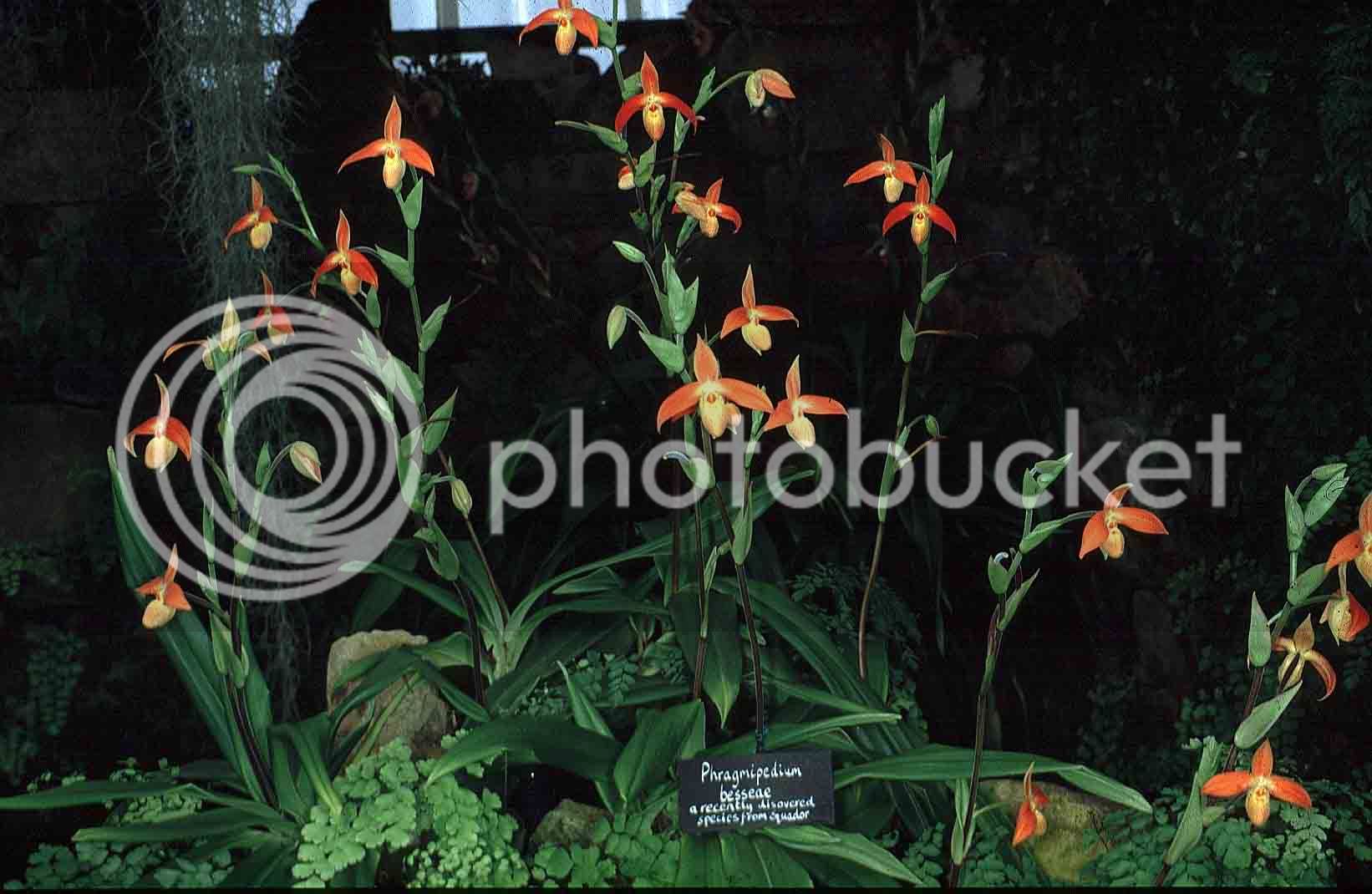Very interesting and yes, we would like to see some of those old photos, Roth.
I will try to ask people in England... So far we only got a handful of public ones, there were some in the RHS Orchid Review as I remember, and a visit in 1995 with the BOC where some people took photos as well. Not easy to find those people back. Martin Ahring took a lot of photos, I remember very well, he was more or less in charge of that, but I don't know where are the photos. When I asked about him, he just had committed suicide I have been told. Alan Moon is still at the RHS, but he cannot move so much ( and was not that much on the photographic side...), John Hainsworth in the early days, before he started to fight with Alan Moon did take many photos, he left to California and died of a lymphoma. I will see who else...
The Eric Young had a lot of mysteries as well in the odontoglossum and cymbidium, some were not exactly made the supposed parents.
It was a wonderful place, with wonderful times in the early 90's. Whilst Chris Purver for sure runs it very well now, there has been a gap between Alan Moon/Don Wimber and him, where many informations and plants went lost.
Here is Alan Moon by the way with one of his Miltoniopsis hybrids:

and it was not the biggest he had bred. I remember one he showed to me with dinner plate flowers, over 20 cm, but he told me that the flower count was too low. It was not very long before he had to get his surgery that ended up his work with the Eric Young. Many people did not like Alan Moon too because they though he was selfish, and felt himself 'high class'. It was completely wrong, but he was a bit like Terry Root on that side, he knew so much that he liked to talk with people who knew their subject very well. As for me, it was after they showed an Adaglossum, very big orange flowers, twisted petals (but excellent symmetry), I was a teenager at that time, but told him that it should be awarded because the size of the flowers and the improvement over previous hybrids was tremendous. He though the same, but we were a bit of a minority, the judges passed it. That's how we came to discuss about a lot of various things, including with Don Wimber. Don Wimber was the man behind the scene to care about chromosome counting, breeding, and a part of the feeding schedule in rockwool. Alan Moon was more the artistic side, and the grower to team up with Don Wimber.
It is very interesting to know too that the Eric Young in those days did not have a laminar hood. Therefore ALL the awarded plants, fantastic plants, etc... have been done using a bunsen burner for the sowing, and a glove box for the replate. I visited the lab upstairs, it was highly primitive. Don Wimber would usually take and preserve all the root tips, and do the counting in Oregon. The sowings were all done on Tsuchiya media, liquid one. He showed to me as well a 5 liters erlenmeyer with a massive callus of phalaenopsis, maybe 20 cm diameter, no shaker, nothing... made in homemade Glove Box. I asked him how he did that, he said that the shaker was absolutely not needed if the media is changed, and the flask is hand shaked every few days. Years later I found he was absolutely right.
As an aside, that's me who gave to the Eric Young my division of the original besseae flavum ( therefore the Fox Valley Gold division) during a show in Brighton, directly to Alan Moon in those days. It was priceless at that time, but I did not like it :sob: and I though they could do better than me with that.
Olaf posted this photo as well some years ago:
Of the dalessandroi at the Eric Young.
One more note, the besseae (real ones) from Peru do not produce stolons. The besseae from Ecuador do make stolons. However Don Wimber counted both types at 2n-24. Only the dalessandroi were counted at 2n=28. The hybrid was counted at 2n=26, but sterile... The tetraploids at 4n=52 were fertile. That's why there is a lot to dig up behind this.
The last point, I still remember the Phragmipedium Eric Young originally bred by the Eric Young and displayed at the WOC ( in the proceeding book there are photos of them too). They were the most amazing Eric Young I have ever seen, and some of the plants were simply monstruous. I have seen later supposed divisions, and the flower shape, leaf size, did not match at all the real plants from this era.







